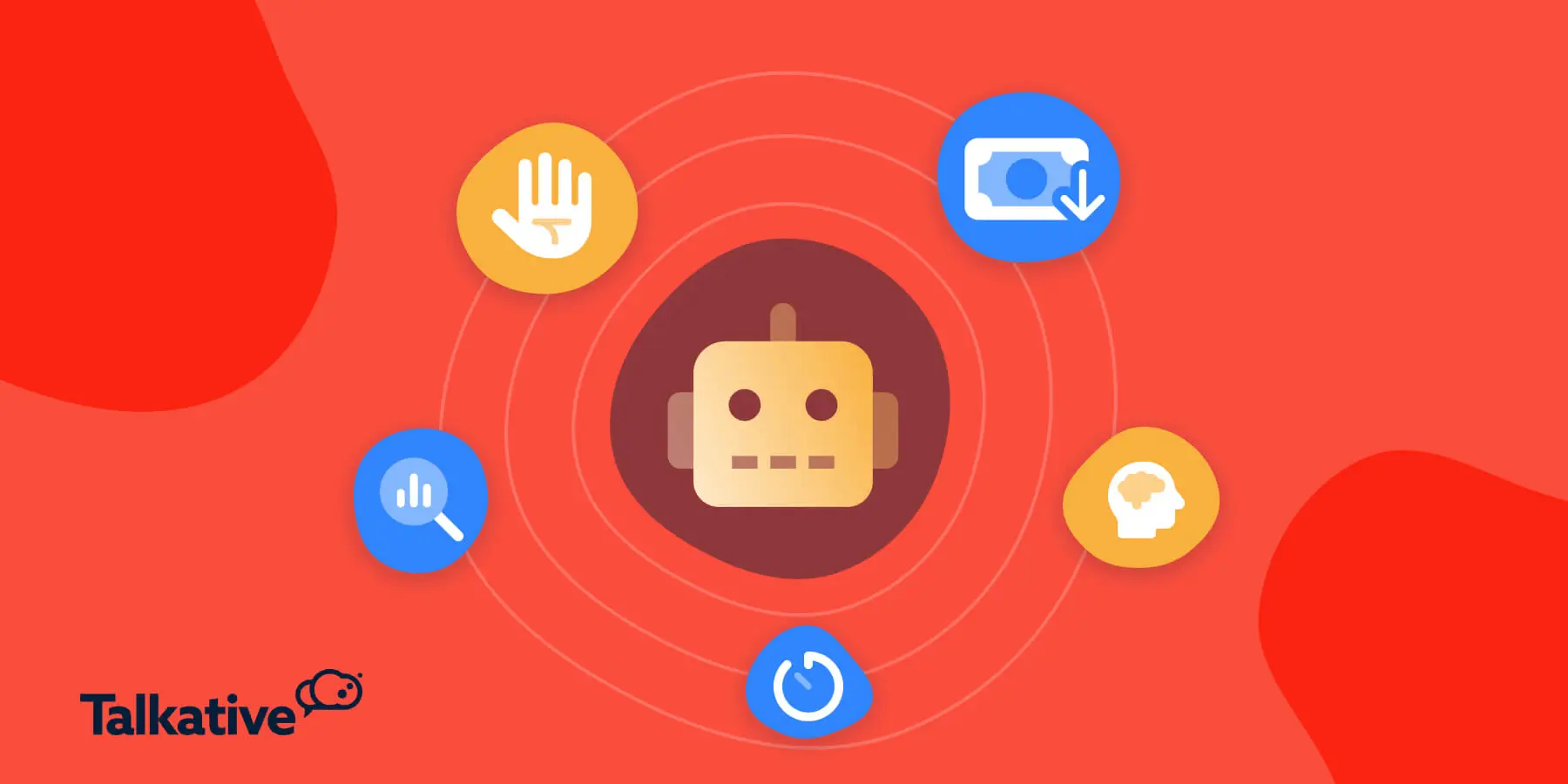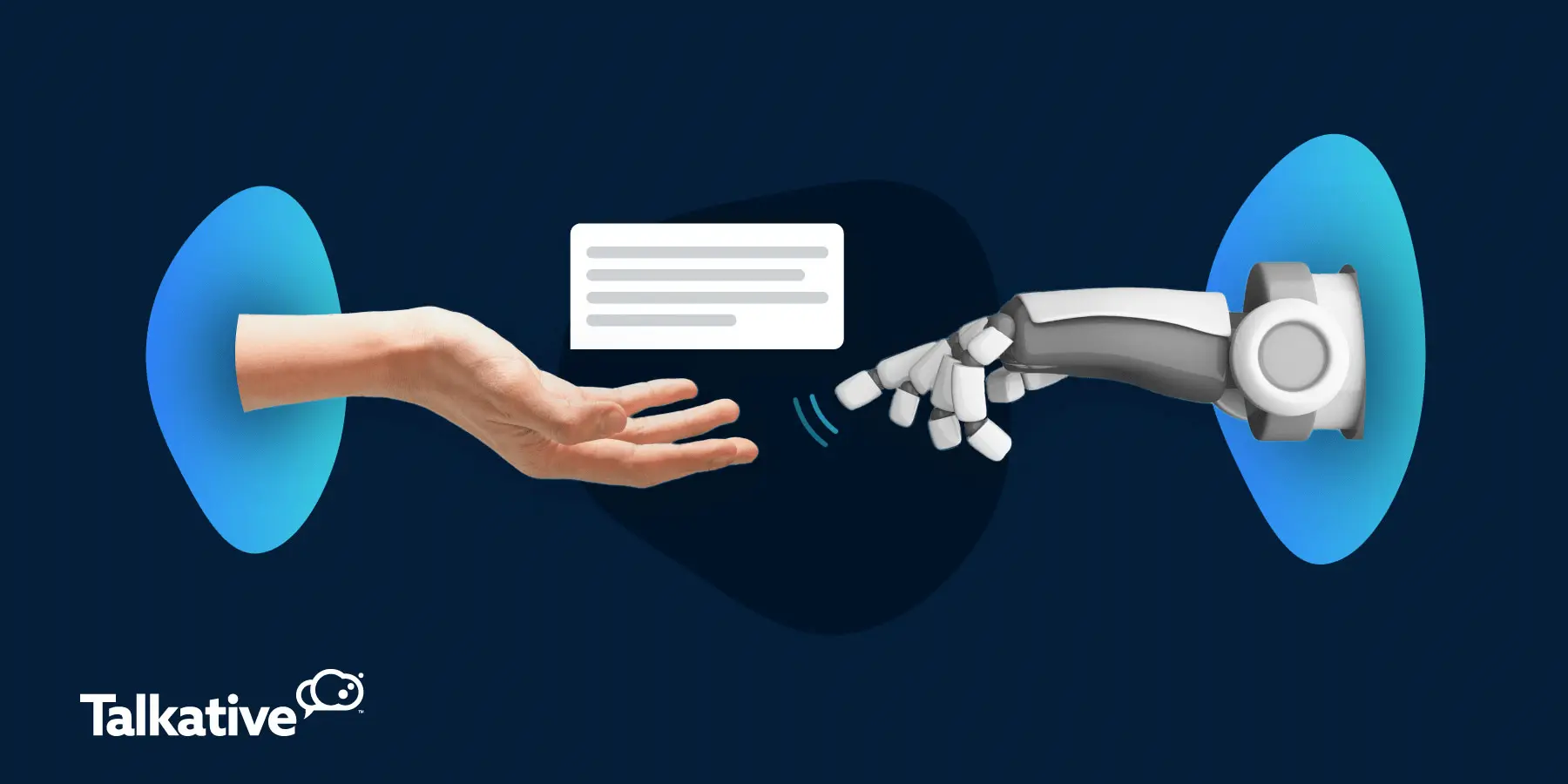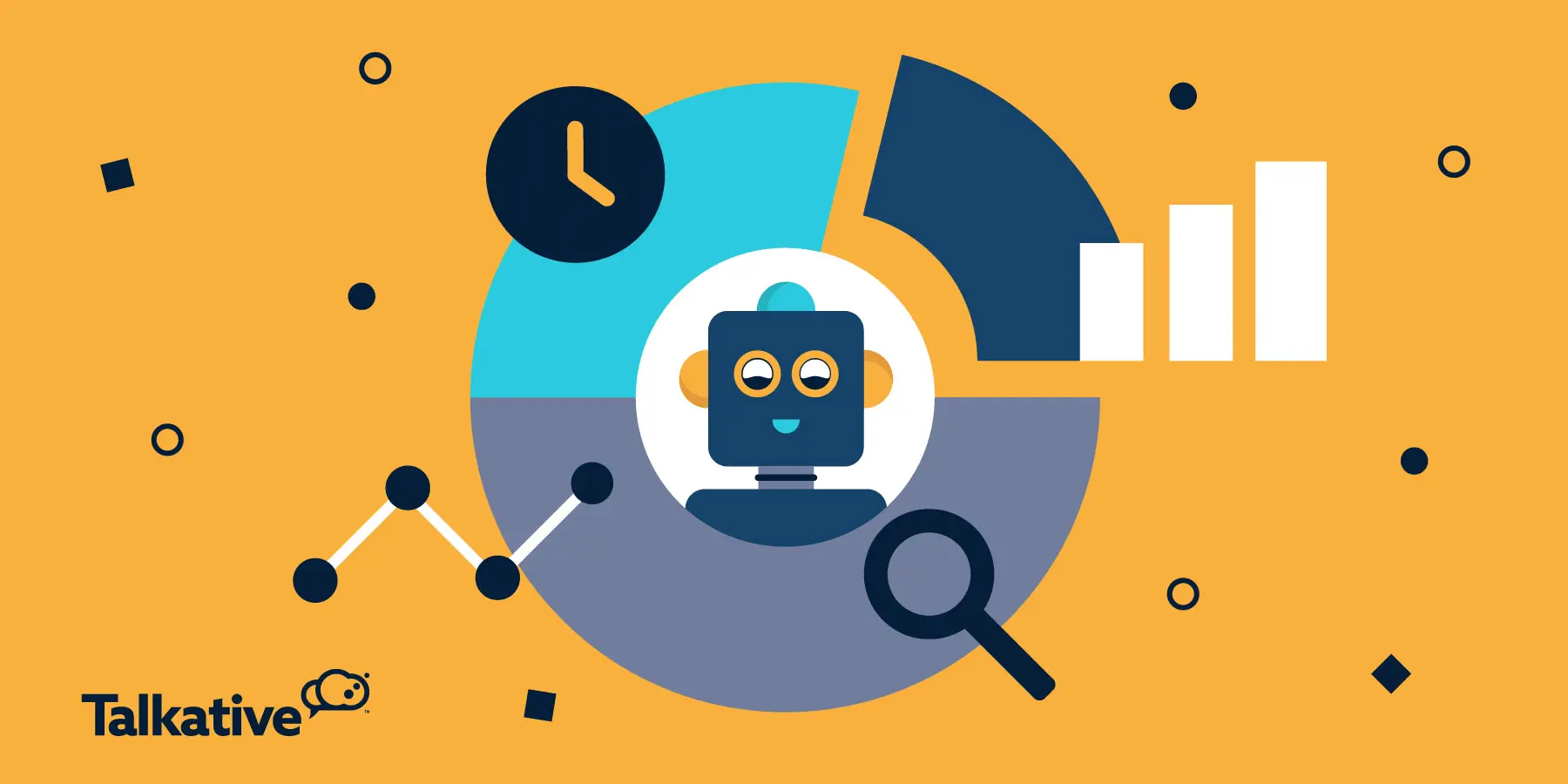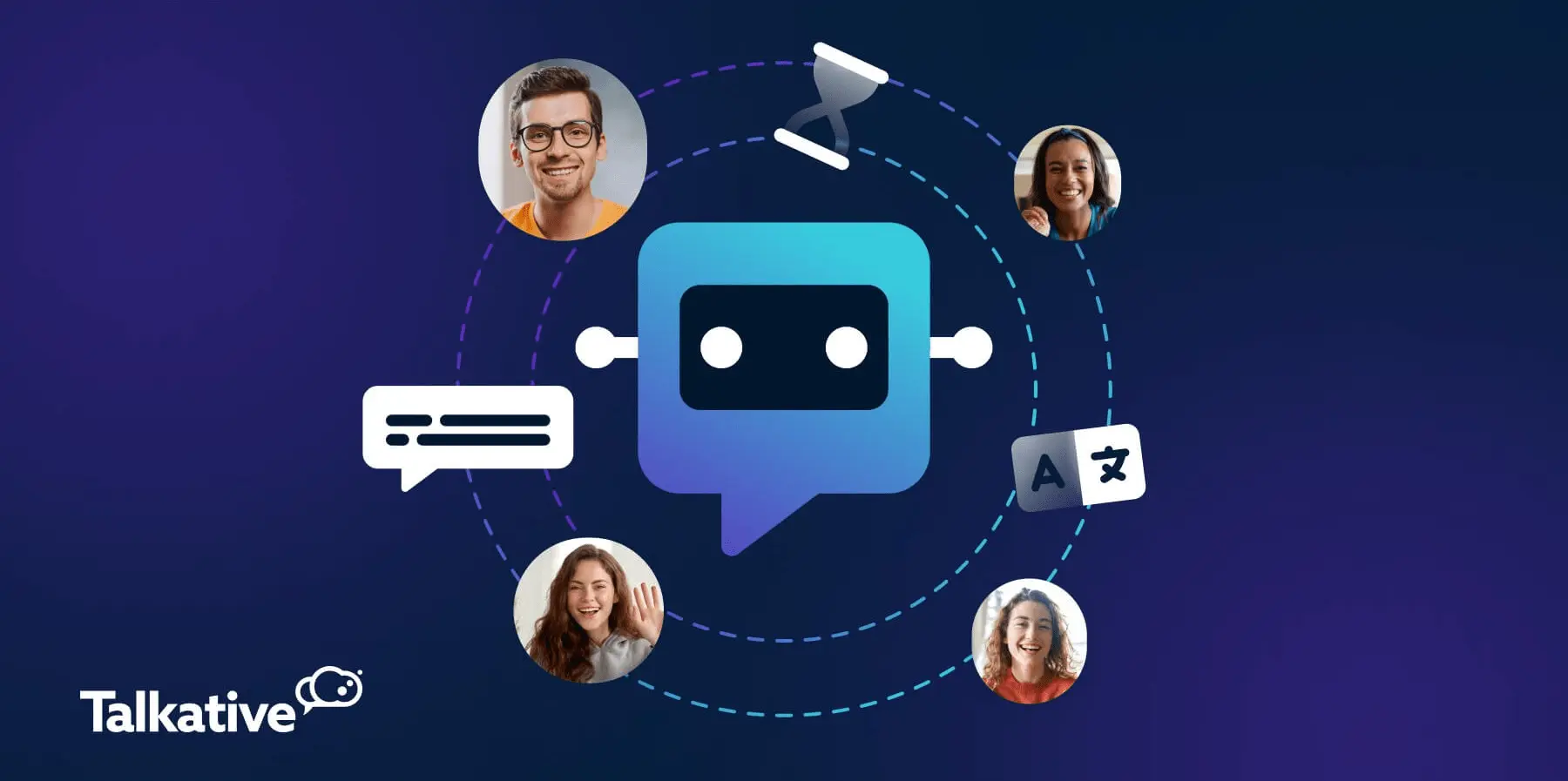The past few years have seen the popularity of customer service chatbots and automation skyrocket.
Consumer usage of chatbots has doubled since 2020.
Meanwhile, terms like ‘AI chatbot’, ‘generative AI’, and ‘AI customer service’ have become business buzzwords.
Whether you like them or not, it’s clear that chatbots are here to stay. And, when used effectively, they can actually do a lot of good for both businesses and consumers.
This is especially true for larger and enterprise-level organisations.
Enterprise chatbots can automate huge volumes of customer requests and can even act as virtual assistants.
But what does this mean for enterprise brands and their customers? How can you make sure that your enterprise chatbot helps rather than hinders?
In this guide, we’ll answer these questions - and more. We’ll cover:
- What are enterprise chatbots?
- Key use cases for enterprise chatbots
- Benefits of AI chatbots for enterprise businesses and customers
- How to use an enterprise chatbot for customer support (best practices)
TL;DR
Enterprise chatbots are AI-powered systems designed for large businesses and organisations, primarily used for automated customer service.
How to use enterprise bots for customer engagement & support: Best practices
- Leverage AI effectively for the best automated support & CX.
- Ensure seamless handoffs to human agents when needed.
- Consider and adapt to what customers expect and prefer.
- Deploy across multiple channels for maximum reach & accessibility.
- Improve your chatbot over time with continuous monitoring & performance management.

What is an AI enterprise chatbot?
Enterprise chatbots are intelligent and sophisticated systems built to meet the needs of large businesses or organisations.
These chatbots work by leveraging advanced artificial intelligence technologies (e.g. generative AI, natural language processing, conversational AI) and are designed to interact with users in a conversational, human-like way.
Although they can be used internally to assist company employees, where they really shine is in the arena of customer engagement and automated support.
For consumers, enterprise chatbots act as virtual agents, providing instant answers and automated support at any time of night or day.
They can be deployed across your website, app, and even messaging apps like SMS or WhatsApp - making sure no customer goes unanswered.

Key use cases for enterprise chatbot platforms
Enterprise chatbots can be used across many industries, so the scope of use cases for them is vast.
Here are some examples of the most common use cases:
- Automating customer service: Enterprise chatbots serve as first-line responders for customer inquiries and can even provide assistance outside of your operating hours. Thanks to AI, these chatbots can answer countless questions about your business/products/services, troubleshoot common problems, automate repetitive tasks, provide information/guidance, and escalate cases to the most appropriate team/human agent when needed.
- Improving feedback collection: Chatbots can actively collect user feedback and analyse customer sentiment during interactions. This provides useful insights into customer perceptions and helps businesses make targeted improvements to their products/services and customer support systems.
- Retail & ecommerce sales: From personalised product recommendations to order tracking, enterprise chatbots in the retail sector can go beyond general support and act as virtual shopping assistants. These ecommerce bots can guide users through the checkout process, provide extensive product information or styling advice, and even assist with in-store shopping queries (e.g. branch opening times, location-specific stock information, etc.)
- Travel bookings: For businesses in this sector, enterprise bots can be used as virtual travel agents or concierges, assisting with online bookings, reservation management, travel planning, complaints, and more. They can also provide real-time updates to travellers throughout their journeys, as well as destination information or advice.

Benefits of AI chatbots for enterprise businesses
Enterprise chatbots can benefit the businesses they serve in a number of ways, for example…
Cost savings
One of the best things about enterprise chatbots is that they slash operational costs.
This is because they can automate many customer service requests and repetitive support tasks.
In fact, an AI customer service chatbot can handle up to 80% of queries independently, reducing customer support costs by around 30%.
They’re also a far more cost-effective solution for managing high volumes of customer queries compared to hiring additional agents.
Increased operational efficiency
Enterprise chatbots are a great aid for boosting efficiency and contact centre performance.
They achieve this by reducing the demand on your customer service teams, allowing them to save time and be more productive.
Plus, enterprise chatbots can act as a triage for customer inquiries, collecting the initial details of the case before handing-off to the most appropriate representative.
This not only improves efficiency but also guarantees that customers get the best support for their situation - without repeating themselves to multiple agents.
Valuable data insights
An enterprise bot can collect and analyse vast amounts of customer data during interactions.
This data can offer valuable insights into:
- Customer behavior, preferences, and pain points
- Customer demographics
- User sentiment towards your chatbot and/or business
- The questions and issues that arise most frequently
- The pathways customers take to find information
Armed with this information, you can make data-driven improvements to your chatbot and support processes over time, leading to higher performance and a better CX.

Benefits of AI chatbots for enterprise customers
It’s not just businesses that benefit from an enterprise AI chatbot - consumers can get a lot out of them, too.
The key benefits for customers are outlined below.
Maximum customer convenience
Today’s consumer craves convenience - they want customer service to be easy and fast.
With a chatbot, customers don’t have to deal with endless phone queues or wait multiple working days for an email response.
Instead, they can get instant answers and fast resolutions without leaving your website/app or interrupting their customer journey.
And, in cases where a customer does need a human agent, the best enterprise chatbot platforms can initiate a seamless escalation to the most suitable team.
An agent can then continue the conversation via the appropriate contact channel, whether that be live chat, messaging, a web call, or even video chat.
A better digital customer experience
It’s clear that the convenience of enterprise chatbots can improve the overall customer experience.
But that’s not all - these intelligent bots can also use natural language processing (NLP) and generative AI to create detailed outputs that can sometimes be indistinguishable from a human response.
They can also be programmed to draw information and responses directly from your business’ knowledge base.
For instance, with Talkative's GenAI chatbot solution, you can build a knowledge base using URLs from your website, plus any file-based content or resources.
This makes chatbot support far more accurate, on-brand, and consistent - reducing the risk that customers will get frustrated with your chatbot for being unhelpful.
Enterprise chatbots can further improve the digital CX by providing personalised customer service based on customer data, needs, and preferences.
Instant & accessible support 24/7
Unlike humans, enterprise chatbots don’t need rest, sleep, or days off work.
Instead, they remain constantly active - ready to offer immediate support around the clock.
As a result, your customers can always access assistance whenever they need it - even outside of regular business hours.
What's more, advanced can even provide multilingual customer service through real-time translation technology.
This is a clear win for customer relations, especially if your customer base spans across different countries and time zones.
How to use enterprise chatbots for customer engagement & support: Best practices
Although enterprise chatbots are advanced systems, getting the best results from them can be challenging.
Like any technology, chatbots have limitations - so they must be implemented and used properly to succeed.
Pay attention to the following best practices, and you’ll be well on your way to getting the most out of your chatbot solution.
1. Use the power of AI
Although enterprise chatbots are generally powered by AI, you might be offered a choice between a rule-based bot design or one powered by artificial intelligence.
The easiest way to differentiate between the two options is to consider their capabilities.
A rule-based or "decision tree" chatbot is designed to use decision trees and scripted messages, which often only work effectively when customers use specific words and phrases.
Although this can be a useful tool for FAQs, it massively limits the scope of user input and the types of questions that can be asked.
AI-powered chatbots, on the other hand, are built and trained to interact with customers in a conversational way.
Instead of relying on scripted decision trees, these bots use machine learning, natural language processing (NLP), and generative AI to understand a customer’s intent and respond in a human-like manner.
They can even remember previous interactions and learn from them over time.
An advanced AI chatbot can also be trained with your own knowledge base.
With Talkative, as we've mentioned, you can quickly import URLs from your company website, plus any other knowledge base articles or resources you have.
From there, the bot can learn from your website/knowledge base content and answer countless questions about your business, products, and services - using the data you input plus generative AI.
It means you can be safe in the knowledge that your chatbot will provide accurate information, on-brand responses, and the best CX possible.
Overall, if you want to offer a humanised experience and the most advanced automated support - an AI-powered chatbot is the best choice.
But, if you just want to reduce some of the demand on your agents in a cost-effective way, a rule-based chatbot can be a useful option - so long as you choose the right provider.
Fortunately, Talkative’s chatbot solution can do AI, rule-based, or a combination of the two.
It means you’ll have all bases covered with us - whatever your business needs.

2. Allow seamless handoffs to human agents
It’s important to remember that chatbots (even enterprise-level ones) are not a one-size-fits-all solution to customer problems.
Even for advanced and well-built bots, there will sometimes be instances when a customer needs or wants human intervention.
In these situations, it’s crucial that the customer can get the help they need. So, your enterprise bot must be able to initiate a smooth hand-off to human agents.
Fail to provide this, and you risk alienating customers. Your chatbot will be avoided at all costs, and you may gain a reputation for poor customer service.
In fact, a seamless escalation from chatbot to human has been shown to make 60% of consumers more likely to continue doing business with a brand.
The best way to achieve this is with the help of an omnichannel platform like Talkative.
With Talkative, you can integrate a chatbot with your other digital communication channels (e.g. live chat, messaging) - facilitating effortless transitions between them and a seamless CX.
By doing this, you’ll ensure there’s always a safety net for cases where your chatbot reaches the scope of its capabilities.

3. Consider your customer preferences
Understanding your customers and their preferences is essential for a successful enterprise chatbot.
It’s important to take into account your target audience and cater to their needs.
Start by analysing the data you have on your current customer base, plus your ideal customer characteristics.
Then, think about how to design your bot’s tone, language, and functionality to best serve those consumers.
Take customer demographics as an example. If your business tends to attract/target a specific age group, you’ll have to be mindful of that group’s attitude towards chatbots generally.
Case in point, one consumer study found that 53% of Baby Boomer respondents find chatbots “annoying”, compared to only 28% of Millennials and 24% of Gen Z consumers.
So, if your target market is mainly Baby Boomers, you’ll have to take extra care to ensure your chatbot is highly humanised and user-friendly.
You’ll also need to make it even easier for them to bypass the bot and get to a human agent, in order to avoid customer frustration.
Another important demographic is location. If you’re an international brand serving consumers from a range of countries/regions, you’ll need a chatbot that can offer multilingual customer service.
It’s why Talkative’s chatbot and live chat solutions include real-time translation into over a hundred languages, allowing you to offer inclusive support to customers around the globe.

4. Deploy across multiple key channels
If you want to maximise the reach and impact of your enterprise chatbot, you should deploy it across multiple key channels.
By doing this, you’ll make your chatbot services more accessible. Customers will be able to find and use your bot with ease - plus, they’ll be able to do so on their channel of choice.
With Talkative, you can implement your chatbot across multiple touchpoints, including:
- Your website and app
- Facebook Messenger
- SMS
When selecting the channels for your bot, go back to considering customer preferences.
Some customers might prefer the immediacy of live chat, while others favour the asynchronous nature of messaging apps like WhatsApp.
Identify the digital touchpoints your customers use the most to seek support and make sure your chatbot accommodates them.
With this approach, your chatbot becomes an accessible tool capable of meeting enterprise customers where they are.

5. Refine your bot over time
The journey with enterprise chatbots doesn’t end at deployment - ongoing refinement is vital.
The practice of monitoring and improving your chatbot’s performance over time is necessary for long-term success.
It’ll also help you confirm that your chatbot is achieving the best outcomes while delivering a positive customer experience.
You can effectively manage and refine chatbot performance with the following strategies:
- Track the right metrics: Identify the key performance metrics and chatbot analytics that align with your business objectives. Key metrics for chatbot performance include- error and escalation rate, resolution rate, handling time, CSAT score, and abandonment rate.
- Collect customer feedback: Implement customer feedback tools, such as post-chat surveys or ratings, within your enterprise chatbot’s interface. Make sure your bot is actively asking customers about their experience, satisfaction level, and any specific problems they encountered. Use this feedback to make improvements to the chatbot’s training and capabilities.
- Conduct user testing: User testing sessions will help you assess the chatbot’s performance in real-world scenarios. Pay attention to how users engage with the chatbot and notice any pain points or usability issues. Quality assurance testing is also important to ensure your chatbot functions properly across different platforms and devices.
As technology and consumer expectations evolve, so too should your chatbot’s capabilities.
By embracing a mindset of continuous improvement, you’ll boost performance and position your enterprise chatbot as a dynamic tool that evolves along with its users.

The takeaway: enhance customer satisfaction with AI chatbot solutions
An AI chatbot can be a valuable addition to any enterprise business.
When used effectively and alongside human-powered support, these systems can boost efficiency, cut costs, and improve your CX.
But for any chatbot to succeed, it needs to be powered by the right technology.
That’s where Talkative comes in.
Our platform provides a scalable and flexible chatbot solution that can be tailored to your specific business needs.
With a Talkative chatbot, you can:
- Choose between an AI-powered or rule-based bot (or a combination of the two - an AI chatbot with rule-based fall-back for maximum efficiency)
- Create AI virtual assistants that are experts in your brand, products, and services
- Meet and serve customers across your website, app, and social messaging platforms
- Seamlessly escalate to human agents when needed
- Provide multilingual customer service without any additional downloads or plugins
- Build multiple chatbots in-house (if you prefer to take the wheel with bot design)
In addition to chatbot and AI solutions, we offer a complete suite of customer contact channels and capabilities - including live chat, web calling, video chat, cobrowse, messaging, and more.
Our solution also supports numerous integrations into other contact centre systems and CRMs, including Salesforce and Mitel.
Want to learn more?
Book a demo with Talkative today, and check out our interactive product tour.



